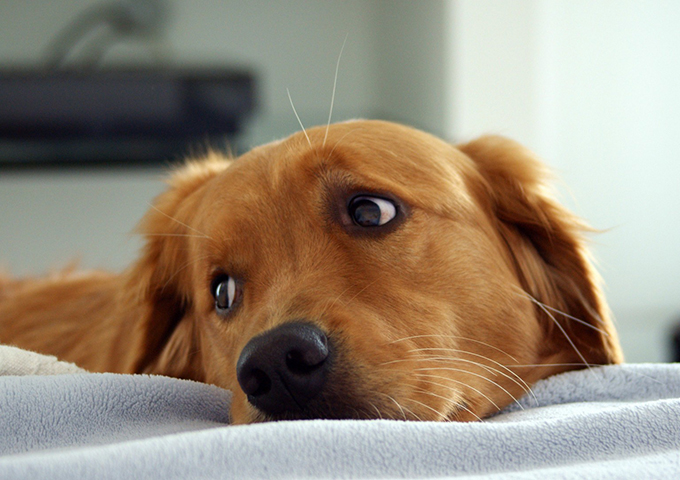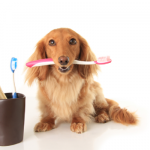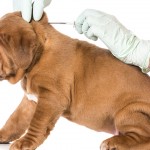By Nancy Kerns, the editor of WDJ (Whole Dog Journal)
There are innumerable exotic diseases and bizarre injuries that can potentially afflict any individual dog, but, sadly, the vast majority of dogs in this country today will suffer from one of a few very prosaic disorders. And many dogs suffer from every single one of the maladies discussed below! Even sadder: All of these life-impairing conditions are 100 percent preventable – easily preventable!
1. Obesity
There are so many overweight pets in this country that there is at least one organization whose sole purpose is to quantify them and help their owners reduce the problem. The Association for Pet Obesity Prevention (APOP) estimates that more than 50 percent of the dogs in this country (and almost 60 percent of cats!) are overweight or obese.
Obese dogs are prone to a number of health problems that are directly related to their weight, including strongly increased incidence of osteoarthritis, high blood pressure, heart and respiratory disease, cranial cruciate ligament injuries, kidney disease, many forms of cancer, and a decreased life expectancy. Though many people assume otherwise, there is actually no clear evidence that obesity causes diabetes in dogs. However, obesity can contribute to insulin resistance, making it more difficult to regulate overweight dogs with diabetes. Obesity is also a risk factor for pancreatitis, which can lead to diabetes.
Fat dogs get caught in the same vicious cycle that fat humans do: the extra weight they carry makes it harder for them to exercise by putting extra strain on their joints, muscles, tendons, and ligaments, and discouraging them from exercising as much or as long. A fat dog has to work harder than his slim counterpart on the same hike, just as you would have to work harder if you were carrying a backpack with an extra 20 percent or more of your body weight in it. Given the extra workload, a fat dog may ache more than the slim dog the day after a long walk, and be less enthusiastic about going on the next walk. And the less exercise he gets, the fatter he may become.
The first step is recognizing the problem.

There are many reasons that dogs get fat – and the first is owner non-recognition of their dogs’ obesity! I’ve hurt the feelings of several friends and family members when I’ve tried to educate them about their dogs’ condition. I try to be kind and tactful – and I suspect their veterinarians do, too, because almost invariably, people will tell me, “My vet has never said anything about it!”
It shouldn’t take a friend or a veterinarian to “diagnose” a fat dog. Your dog is likely overweight if, when viewed from above, she has no appreciable waist; or if you can’t very easily feel your dog’s ribs. Running your hand across her ribcage should feel rather like palpating the back of your hand, with bones covered with only a thin layer of skin and muscle. If it feels more like it does when you palpate the palm of your hand just below your fingers, she’s likely overweight; if it feels more like the meaty part of your palm at the base of your thumb, she’s probably obese!
But perhaps you know your dog is a little heavier than she ought to be – you just hate to take away anything that makes her happy. Please remember that she will decidedly not be happy when she’s suffering from osteoarthritis at age 5, or exercise-intolerant at age 7. Our dogs’ lives are short enough! Condemning them to even shorter lives, full of pain and (at the very least) discomfort for the latter half of their lives is not very kind at all.
Ideally, you help your dog stay fit and trim with an appropriate diet and the right amount of daily exercise. If your dog is already fat, make it a priority to help her lose weight and gain fitness. If you (slowly) increase the lengths of the walks you take her on, you just may find that you lose some weight as well! For most of us, that would be a very good thing, indeed!
2. Dental Disease
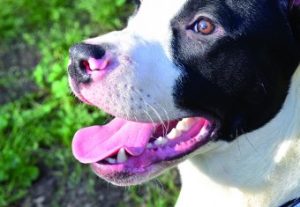
I’m certain I’ve never met a single dog owner that liked maintaining her dog’s dental hygiene – unless her dog had perfectly clean teeth without any efforts from the owner whatsoever. Whether you brush your dog’s teeth and/or pay for your dog to have her teeth cleaned at the veterinarian’s office, it’s an unhappy chore.
Some dogs do go through life, from puppyhood to old age, without forming a bit of dental calculus (also known as tartar). But most dogs have significant dental issues by the time they are middle-aged; one study identified periodontitis (inflammation of the tissue around the teeth, often causing shrinkage of the gums and loosening of the teeth) in a whopping 82 percent of dogs aged 6 to 8 years!
What’s the problem with that? Periodontal disease can lead to histopathologic changes in the kidneys, liver, and myocardium, and has been linked to cardiac diseases in dogs.
Also, unless a dog is anesthetized fully for a dental cleaning, things like cracked or broken teeth may go undiagnosed for a long time, leaving your dog in daily pain, especially when eating or trying to play with toys. And a dog who is forced to endure chronic dental pain may be (understandably) cranky with his human and canine family members. (I can’t tell you how many times I’ve heard about dogs who had developed aggressive behavior that went away almost immediately after a cracked tooth was finally detected and removed.)
It only makes sense to keep an eye on your dog’s teeth – including those hard-to-see molars in the back – and take appropriate action to keep them clean and healthy. When you schedule your dog’s annual wellness exam (you do take your dog in for an annual exam, don’t you?), make sure your veterinarian takes more than a one- or two-second peek at your dog’s teeth. (You can facilitate this by training your dog to allow you to lift his lips for increasingly longer moments, until his teeth can be visually inspected pretty thoroughly.) And plan on taking whatever steps are necessary to maintain his dental health, from daily brushing and the regular use of dental rinses or gels that help control dental tartar, to a professional dental cleaning under anesthesia at your veterinarian’s clinic.
3. Over-Long Nails
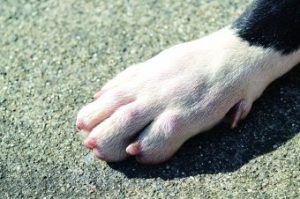
This problem may not seem as dramatic as the first two, but while it’s true that long toenails only rarely cripple a dog and don’t cause systemic disease, they can significantly decrease a dog’s quality of life by making his every step uncomfortable. (Plus, this can contribute to or aggravate a weight problem, as a dog whose feet hurt more and more from over-long nails becomes reluctant to exercise.)
Super-long nails are usually easy to spot, but dogs who have long hair on their legs and feet may be hiding painfully long nails – and perhaps even lesions on their toes from where long, curving nails have created pressure sores on adjacent toes.
But if they are not yet at an obvious, curving, “Call the SPCA” length, how do you know if your dog’s nails are too long? The best test is to listen closely as he walks across a tile or hardwood floor: If you can hear his nails go “Tick, tick, tick, tick,” as he walks, they are too long! (I’m guessing 90 percent of you just went, “Ugh!”)
If your dog’s nails are thick and long, don’t despair – but don’t avoid this important, basic responsibility, either. If you are easily able to cut your dog’s nails, trim a tiny bit off each nail weekly. If it’s a struggle for you (for any reason, whether your dog’s behavior or your own squeamishness), look for a groomer who will help you schedule trimming visits frequently enough to restore your dog’s feet to health over the next few months.

